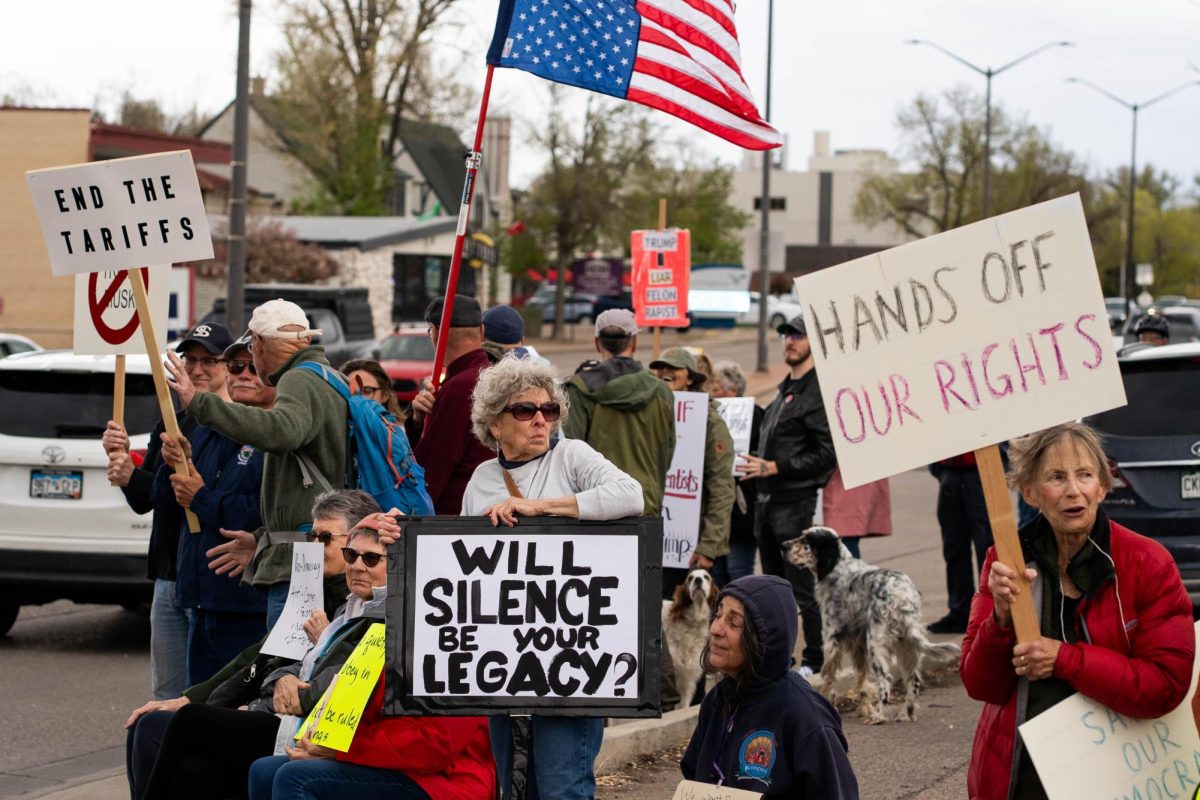Nearly half of all bike crashes this semester have been between a bike and car, and bike crashes are hardly ever the fault of a pedestrian, according to the most recent records from the CSU Police Department.
A total of 24 bike crashes have occurred this semester. The most common types of crashes have involved bikes and cars colliding and single bike crashes.
According to records at the Colorado State University Police Department, the breakdown of types of bike crashes this semester are:
- Bike vs. Car – 11
- Bike vs. Bike – 2
- Bike vs. Ped – 1
- Single Bike crashes – 10
Fault of accident:
- Cyclist’s fault – 4
- Car’s fault – 4
- Pedestrian’s fault – 0
- No fault – 4
Morgan Iacono, a sophomore history student, was the victim of a bike crash earlier in the semester. Iacono said she was a pedestrian who was hit by a cyclist while crossing at a four-way intersection near the Aggie Village apartments.
“(The cyclist) didn’t stop and went right through (the intersection),” Iacono said. “To jump out of the way, I rolled my ankle really bad, but I still got hit. It happened to be the leg that I’ve broken and sprained several times … I had some scrapes and stuff from rolling on the ground.”
“There were also cars that were trying to drive through that area at the same time, too, so if he hadn’t hit me, he probably would have been hit by something else or something in the future,” Iacono said. “It’s just not a safe position whether it’s with a pedestrian or with a car, so I feel like he wasn’t being vigilant or he was just in a hurry and just didn’t think about it.”
Iacono said cyclists should be more aware of their responsibilities on their bikes to avoid colliding with pedestrians.
“In my opinion, there should be a little more education on the right of way when it comes to bikes,” Iacono said. “I think a lot of (students) are used to being in the pedestrian position, (so) when they get on the bike they don’t really understand (that) they’re now a vehicle, and stop signs and signs that say ‘Yield to Pedestrians’ do apply to them.”
Aaron Fodge of CSU’s alternative transportation said both pedestrians and cyclists have to pay attention to their surroundings.
“When (pedestrians are) walking in really congested areas, I would recommend not wearing earbuds, so you could actually hear someone talking to you say, ‘Hey, I’m approaching’ or ringing a bell,” Fodge said.
He also encourages cyclists with earbuds in to take them out.
Fodge said pedestrians should take precautions when walking on campus by using the designated pedestrian side of the trails, even though they have the right of way.
“Make sure to look both ways when you cross the bike trail or road, wherever they’re walking on,” Fodge said. “We always encourage folks to use the pedestrian side of the trail. Almost all of those trails are signed to let you know which is the appropriate side to walk on, usually with a sign and then a symbol in the concrete itself.”
Fodge encourages cyclists to use hand signals to be courteous to pedestrians who are walking around them.
“We try to encourage at all of our educational events and activities to use hand signals,” Fodge said. “We’re proud of the number of people that ride bikes here on campus, but … students need to communicate with each other when they’re riding bikes. Just like when you’re driving a car, if you’re going to turn left, you need to signal left.”
Fodge highly encourages students to use the stop signal in particular, along with yielding to pedestrians.
“If you’re going to stop, it’s always a courtesy to use that stop signal,” Fodge said. “Students need to make sure to slow down at the yield, and yes, it allows you to roll through there, (but) it doesn’t relieve you of the accident because you failed to yield. Ultimately, if you cause an accident because you ran out and didn’t yield, they’re going to be at fault.”
Collegian reporter Haley Candelario can be reached at news@collegian.com or on Twitter @H_Candelario98.











Trevor Frith • Nov 30, 2016 at 8:52 am
Blame the driver, especially if they are a women or old. Never blame the guys in charge of driver legislation and training, who set the driver up to fail. They forced this driver to brake an automatic car with only the right foot. They did this knowing they had 0 scientific justification and that right foot braking is too complicated, inefficient and dangerous compared to the simpler and safer left foot braking method. See DOT HS 811 597 and 812 058. Score to date, 30,000-150,000 dead, millions injured, and billions in costs. So much for Toward Zero Deaths.